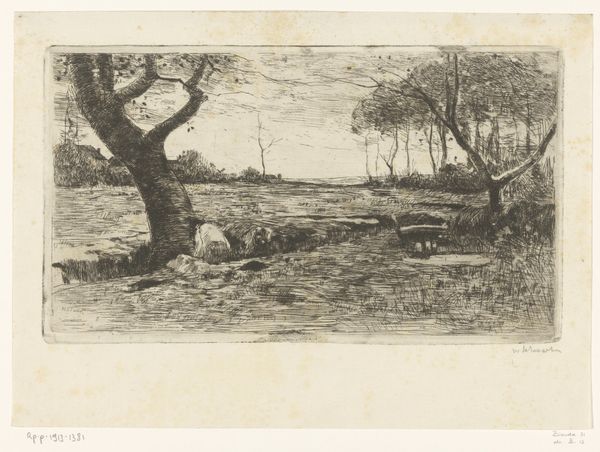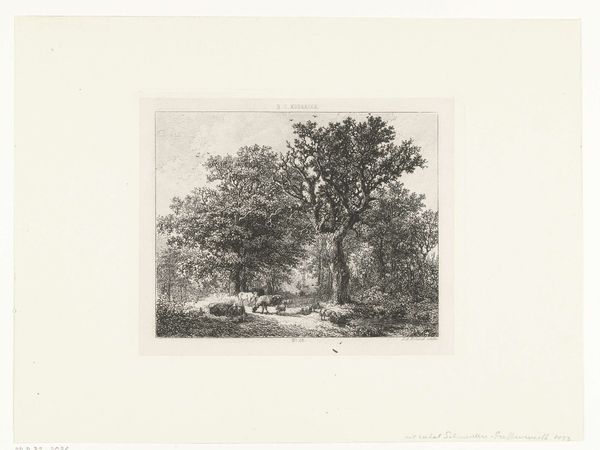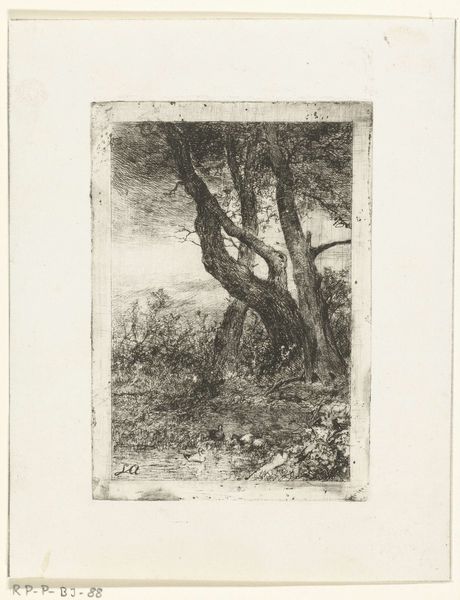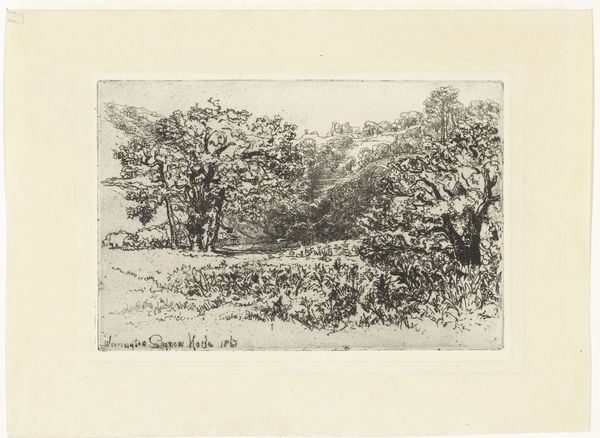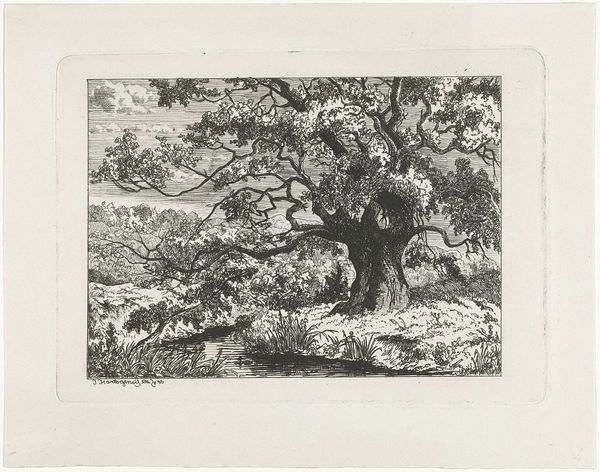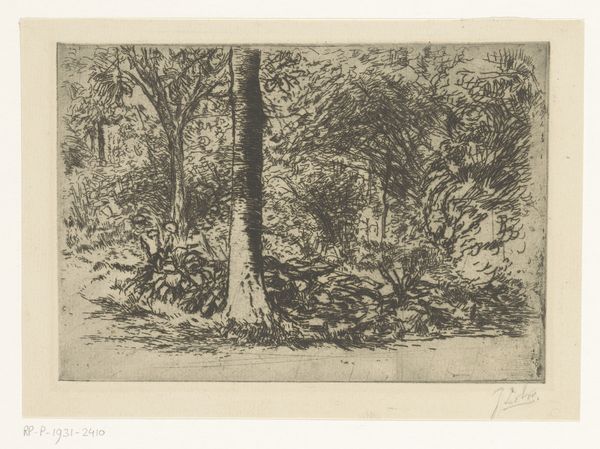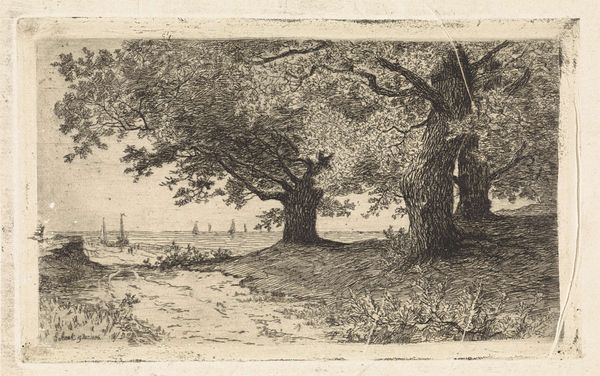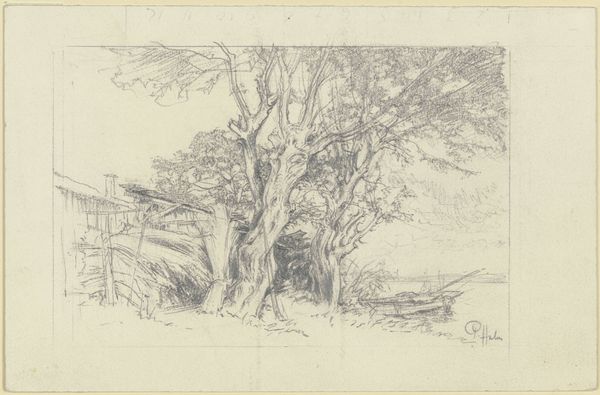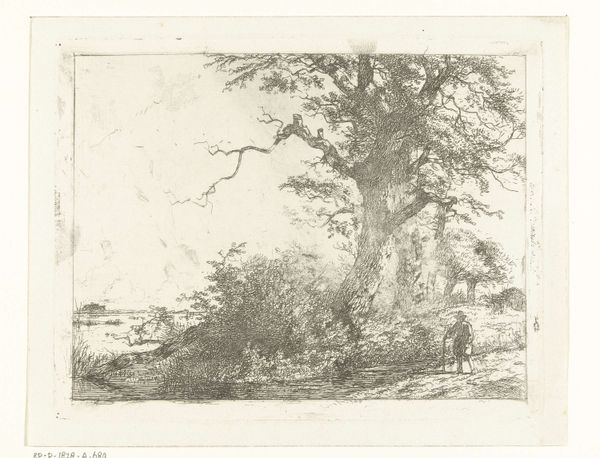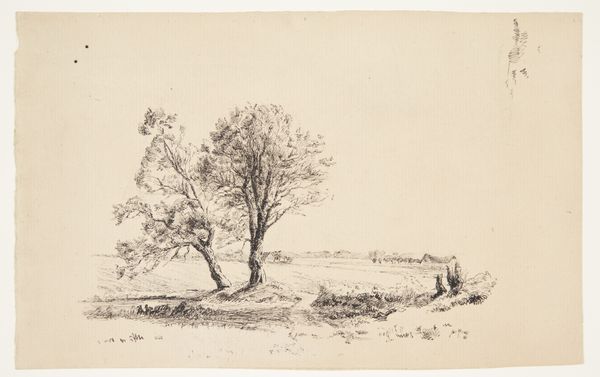
drawing, print, etching, paper, ink
#
drawing
# print
#
etching
#
landscape
#
paper
#
ink
#
romanticism
#
botanical drawing
#
pen work
Dimensions: height 93 mm, width 160 mm
Copyright: Rijks Museum: Open Domain
Albertus Brondgeest made this etching of a landscape around the early 19th century. This isn't just a picture; it's a record of a specific set of skills and processes. Think about how the image was made. Etching involves coating a metal plate with a waxy, acid-resistant substance, drawing through it to expose the metal, and then immersing the plate in acid. The acid bites into the exposed lines, creating grooves that hold ink. The plate is then carefully inked, wiped clean, and pressed onto paper, transferring the image. The very act of etching emphasizes line and texture. Look at how Brondgeest uses the fineness of the etched line to create tone and depth. The level of detail suggests considerable labor, demanding a deep understanding of materials, a sensitivity to line, and the application of chemical processes. In its time, etching was a relatively democratic medium, allowing for the wide distribution of images. So, while it might seem worlds away from industrial production, it reflects the beginnings of mass culture. Appreciating this print means acknowledging the work that went into it, and its place in a changing world.
Comments
No comments
Be the first to comment and join the conversation on the ultimate creative platform.

